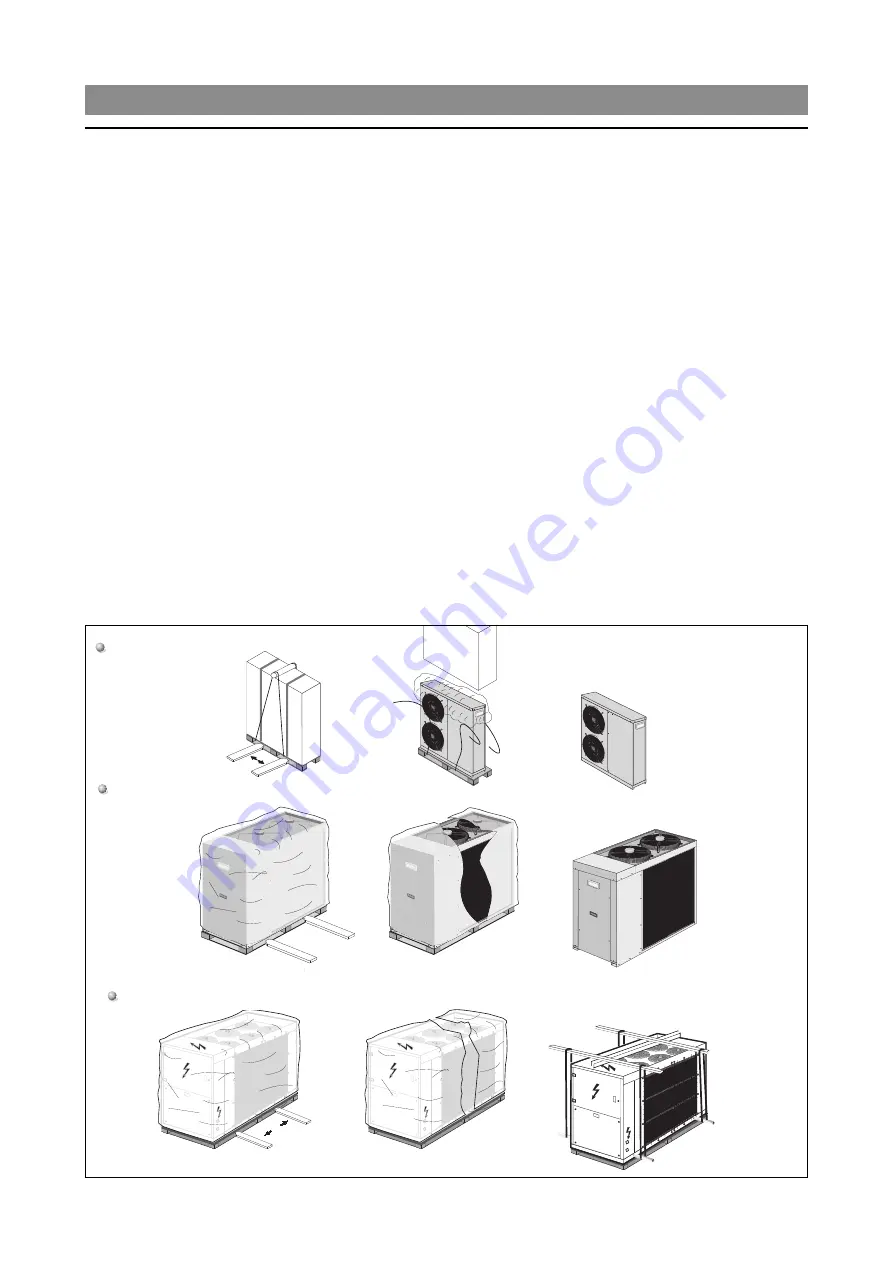
34
INSTALLATION ET UTILISATION DE L'UNITÉ
•
UNIT INSTALLATION AND USE
RÉCEPTION DU PRODUIT •
PRODUCT RECEIPT
Les unités sont livrées dans un emballage standard compre-
nant une base en bois et une boîte en carton.
Les unités 100 - 300 sont expédiées dans un emballage
standard comprenant une base en bois et en polyéthylène.
Avant de déplacer l'unité vérifier l'absence de dommages dus
au transport et vérifier que les équipements de levage et de
positionnement sont adaptés en capacité de portage (voir table
des poids). Les équipements de manutention doivent respecter
les normes en vigueur.
Une attention particulière doit être apportée à toutes les opéra-
tions de chargement, déchargement et levage pour éviter toute
situation de danger pour les personnes et d'endommager la
charpente et les organes de la machine.
Si l'on utilise un chariot élévateur à fourche, il faut prendre
l'appareil sous la base en distançant les fourches du même
chariot au maximum prévu.
Si l'on utilise une grue, Vérifier que les courroies sont homolo-
guées pour supporter le poids de l'unité. Faire attention qu'elles
sont bien fixées au châssis supérieur et aux montants de levage,
les fermetures de sécurité doivent garantir que les courroies ne
sortent pas de leur logement. Alors que l'appareil a été déballé,
on peut le soulever et le déplacer afin d'insérer deux tuyaux de
métal dans les trous prévus. Le châssis de levage doit avoir le
point d'accrochage à la verticale du barycentre. Pendant le
levage il est conseillé de monter les supports antivibratiles (VT)
en les fixant aux trous sur le socle selon le schéma de montage
fourni avec les accessoires (VT).
Il est absolument interdit de
rester sous l'unité.
The units are standard conditioned for shipment in a carton
box and a wooden pallets.
The units 100 to 300 are standard conditioned for shipment
with polyethilene and a wooden pallets Before moving the
unit, make sure that it has not suffered any damage during tran-
sport and make sure that the lifting and positioning equipment
to be used has an adequate capacity and that it complies with
current safety regulations. Particular care must be taken during
all loading, unloading and lifting operations, to avoid potential
danger to persons, damage to carpentry works and damage to
the machine's working parts.
Using a fork lift truck, lift the base on the lower side spacing the
forks at their maximum width.
Using a crane
,
make sure that the belts are capable of bearing
the full weight of the unit, ensure they are firmly fixed to the
upper frame and to the lifting forks, the safety fastenings must
ensure that the belts do not come out of their housing.
Once the machine has been unpacked can be lifted and
moved so that the metal pipes can be fitted in the special holes.
The lifting (not supplied) forks must be of a suitable size, and
must protrude from the base by a length sufficient to allow the
lifting cables to be raised from above without encountering any
type of interference.The lifting frame connection point must be
vertical to the center of gravity. During lifting it is recommended
that the vibration damper supports are installed (VT), fitting
them to the holes in the base, according to the assembly dia-
gram supplied with the accessories (VT).
Never stand under the unit.
AN 041
➝
➝
080
AN 150
AN 300
















































